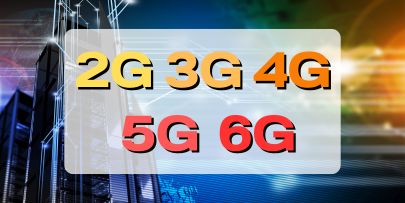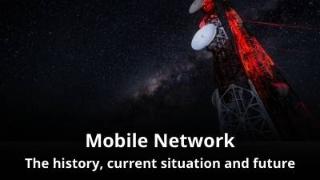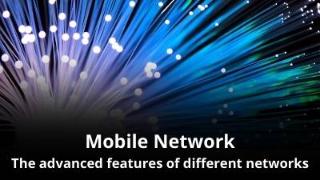The Advanced features of the different Mobile Networks.
The advanced features of mobile networks have evolved significantly across different generations. Understanding these features is crucial when setting up your Mobile Virtual Network Operator (MVNO) as they impact the types of services you can offer and the overall user experience.
What are the advanced features of the different networks?
- Why do the Advanced Features of the Mobile Network matter for Your MVNO?
- What are the Advanced features of the different mobile networks?
- What are the Advanced features of the 2G (Second Generation) Mobile Network?
- What are the Advanced features of the 3G (Third Generation) Mobile Network?
- What are the Advanced features of the 4G (Fourth Generation) Mobile Network?
- What are the Advanced features of the 5G (Fifth Generation) Mobile Network?
- What are the Advanced features of the 6G (sixth Generation) Mobile Network?
- Summary of the Advanced features of Mobile Network
Why do the Advanced Features of the Mobile Network matter for Your MVNO?
Business and Enterprise Solutions
Advanced features like low latency and network slicing enable tailored solutions for businesses, IoT applications, and mission-critical services, opening avenues for B2B partnerships.
Service Differentiation
Offering advanced features sets your MVNO apart from competitors, attracting users seeking high-quality services and cutting-edge technology experiences.
Attracting Tech-Savvy Users
Users who rely on AR, VR, gaming, and other data-intensive applications require networks with advanced features. Catering to these users can expand your customer base and revenue streams.
Future Proof
Embracing networks with advanced features ensures your MVNO is prepared for future technologies and market demands, providing a sustainable business model in the long run.
Partnerships and Alliances
MVNOs offering advanced features can form strategic partnerships with content providers, app developers, and tech companies, creating mutually beneficial alliances and revenue-sharing opportunities.
What are the Advanced features of the different Mobile Network?
Below is a breakdown of the advanced features of 2G, 3G, 4G, 5G and 6G networks, and why they matter for your MVNO:
- What are the Advanced features of the 2G (Second Generation) Mobile Network?
- What are the Advanced features of the 3G (Third Generation) Mobile Network?
- What are the Advanced features of the 4G (Fourth Generation) Mobile Network?
- What are the Advanced features of the 5G (Fifth Generation) Mobile Network?
- What are the Advanced features of the 6G (sixth Generation) Mobile Network?

What are the Advanced features of the 2G (Second Generation) Mobile Network?
While 2G networks lack the high-speed data capabilities of later generations, they are essential for basic voice and text communication, making them suitable for cost-effective plans targeting users with minimal data needs.

SMS (Short Message Service)
2G enabled text messaging, allowing users to send short text messages.
GPRS (General Packet Radio Service)
GPRS introduced packet-switched data services, enabling basic internet browsing and email.
Digital Encryption
2G networks introduced digital encryption for secure voice communication, enhancing privacy and security.
What are the Advanced features of the 3G (Third Generation) Mobile Network?
3G networks are suitable for users who require moderate data speeds and video calling capabilities. They are a transitional option for areas where 4G or 5G coverage is limited.

Video Calling
3G introduced video calling capabilities, allowing users to have face-to-face conversations over the network.
Mobile Internet
3G networks provide a better mobile internet experience, enabling access to websites, social media, and basic online services.
High-Speed Data
3G networks significantly improved data speeds, enabling faster internet browsing, multimedia streaming, and video calls.
What are the advanced features of the 4G (Fourth Generation) Mobile Network?
4G networks are ideal for users who demand high-speed internet, low latency, and excellent call quality. They support a wide range of data-intensive applications, making them suitable for most consumer and business needs.

Low Latency
4G reduced latency, ensuring quicker response times for interactive applications and real-time communication.
VoLTE (Voice over LTE)
4G introduced high-quality voice calls over the LTE network, providing better call quality and faster call setup.
High-Speed Internet
4G networks significantly enhanced data speeds, enabling seamless HD video streaming, online gaming, and faster downloads/uploads.
What are the Advanced features of the 5G (Fifth Generation) Mobile Network?
5G networks are crucial for users who demand ultra-high-speed internet, minimal latency, and support for emerging technologies. They empower innovative applications and services, making them valuable for tech-savvy consumers and industries.

Lowest Latency
5G minimizes latency, facilitating real-time communication, autonomous vehicles, and mission critical IoT applications.
Network Slicing
5G allows the network to be sliced into virtual segments, catering to specific applications’ requirements, ensuring optimal performance for diverse services.
Ultra-High-Speed Internet
5G networks offer multi-Gbps speeds, enabling rapid downloads/uploads and supporting futuristic applications like augmented reality (AR) and virtual reality (VR).
What are the Advanced features of the 6G (sixth Generation) Mobile Network?
The specific advanced features of 6G have not been fully defined, researchers and experts in the field of telecommunications have outlined several potential advancements and capabilities that may be part of 6G networks. Please note that these features are speculative and might change as research progresses:
Terahertz Communication
6G is expected to utilize terahertz frequencies, enabling significantly higher data rates than 5G. Terahertz waves have much shorter wavelengths, allowing for the transmission of massive amounts of data in a very short time.
Holographic Communication
6G may introduce holographic communication technologies, enabling users to interact with realistic holograms in real-time. This advancement could revolutionize teleconferencing, gaming, and virtual collaboration.
AI-Powered Networks
6G networks are expected to be highly intelligent, incorporating artificial intelligence (AI) and machine learning algorithms. AI can optimize network resources, predict user behavior, and enhance security.
Advanced Spectrum Management
6G networks may utilize advanced spectrum management techniques, including dynamic spectrum sharing and advanced beamforming technologies. These advancements could enhance spectral efficiency and network reliability.

Tera-scale Computing
6G could facilitate tera-scale computing, enabling complex computational tasks with incredibly high speeds. This capability is essential for processing big data generated by futuristic applications such as augmented reality and AI-driven services.
Quantum Communication
Quantum communication technologies might be integrated into 6G networks, providing unprecedented security for data transmission. Quantum Key Distribution protocols could be used to secure communication channels.
Bio-Integrated Connectivity
6G networks could explore bio-integrated connectivity, allowing seamless interaction between biological systems and digital networks. This could enable advanced healthcare applications, neurotechnology.
Sustainable and Green Technologies
Environmental sustainability is likely to be a key focus in 6G development. Researchers are exploring energy-efficient technologies and eco-friendly network designs to minimize the carbon footprint of future networks.
Summary of the Advanced features of Mobile Network
Considering the advanced features of different network generations is vital for tailoring your MVNO’s offerings to specific user segments and industries. It enables you to provide services that meet the evolving needs of consumers and businesses, ensuring customer satisfaction, retention, and long-term success.








